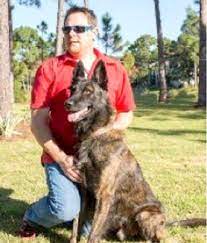By Steve Kotowske
The news feeds are filled with stories of missing, run away dogs lately. There are many reasons why dogs run away so I wanted to share some tips to help keep your dog safe at home. Not one of those tips involves a toy filled with peanut butter!
 I found some interesting facts while studying this subject, including which breed runs away the most… the beloved Labrador Retriever. There is no single reason or even top 10 reasons why a dog runs away that everyone can agree on. It is different for every dog, and since they cannot tell you why they took off, we are left with making assumptions. While every dog is different, there are some key things that will help with most dogs.
I found some interesting facts while studying this subject, including which breed runs away the most… the beloved Labrador Retriever. There is no single reason or even top 10 reasons why a dog runs away that everyone can agree on. It is different for every dog, and since they cannot tell you why they took off, we are left with making assumptions. While every dog is different, there are some key things that will help with most dogs.
If we assume correctly we can start with boredom. Dogs can become quite bored and look for attention elsewhere. You probably have seen this while walking your dog through your neighborhood. They pull the leash seeking attention from others or sniffing everything. Dogs have powerful noses and an instinct for hunting. They can become enticed to follow their nose just by the change of wind direction that carries a scent they become interested in. They also have prey drive which in simple terms is about something moving. They decide to uncontrollably chase something of interest to them. Some enjoy the chase by itself, while others enjoy the kill. They are dogs after all. Some become distracted by the next odor or squirrel or bicycle, and now they are lost, unable to get back home. Then they find something to engage with and their play drive takes over. This is fun! All the while drifting further from “home”, and feeling satisfied at the same time. Three simple drives… hunt, prey, and play. Did you know you can satisfy these drives safely at home by playing games with your dog?
Fear and anxiety is another major reason dogs run away. Loud, unexpected noises are the top reason that July 4th is the greatest night of escaping dogs. This is because those dogs don’t feel safe. Fear blocks out reasoning skills, which dogs have far less of than you might think. It is about self-preservation, and should not be taken lightly. Some dogs just hide under a bed, while others take to flight to avoid facing the fear. You’ve heard “fight or flight”, and some dogs lack the ability to fight their fears. You can help your dog immensely by not loving the confidence out of them and by playing games to help them adapt to noises. Correct socialization is largely about exposure, teaching your dog how to not react to changes in stimuli.
Hormones are another reason dogs leave your yard or home. They get worked up and want to breed. It is hardwired into their system just like humans. And like humans, some have more desire than others. Some dogs cannot control those desires because they lack impulse control. The easy answer is to spay/neuter, but it is definitely not without some cost. Those same hormones help your dog with adaptability and overcoming fear and even lend themselves to strengthening impulse control. Data on early spay/neuter is also shown to create more problems with fear of strangers and other dogs, so you might be compounding a problem. Everyone has to weigh out the risks and benefits for themselves. It is a hotly contested topic, filled with misinformation and the myth that it will “fix” your dog. It eliminates procreation, but is not the blanket fix most people are hoping for.
There is an interesting fact about stray dogs becoming feral that you should take note of. After 28 days of a dog not having a connection with a human, it begins to cycle backwards into a feral state. “Feral” means to fear humans, to not rely on them, to revert back to a wild natural state. This really happens and is why so many strays are afraid of people. Rescue groups often assume abuse, but the reality is many dogs are just rolling back time. Neglecting a dog by not spending quality time with it, satisfying its needs and drives can also trigger this anti-domestication impulse in dogs. Since dogs are not highly intelligent animals, this is just a natural regressive response for survival. It hardly looks like survival through human eyes, but it is what they are wired with.
Training your dog for impulse control, crating your dog for keeping it SAFE, PLAYING with your dog properly to satisfy drives, building confidence in your dog rather than creating more anxious behavior is the key to keeping your dog safe and at home. There is no single “fix”, it is multi-faceted. Dogs may not be the smartest creatures (although we tend to wrongly believe they are), but they are still very complex. You must meet their needs. They were not always domesticated, you must create a relationship with them. You must lead them. You must maintain the relationship to keep it healthy.
We all seek a “loyal companion” in our dogs. Loyalty comes with a price in any relationship – love is not enough, it takes action! Now that will preach!
Steve Kotowske is a Certified Obedience Trainer, Instructor and owner of “What’s Up Dog”?


























































